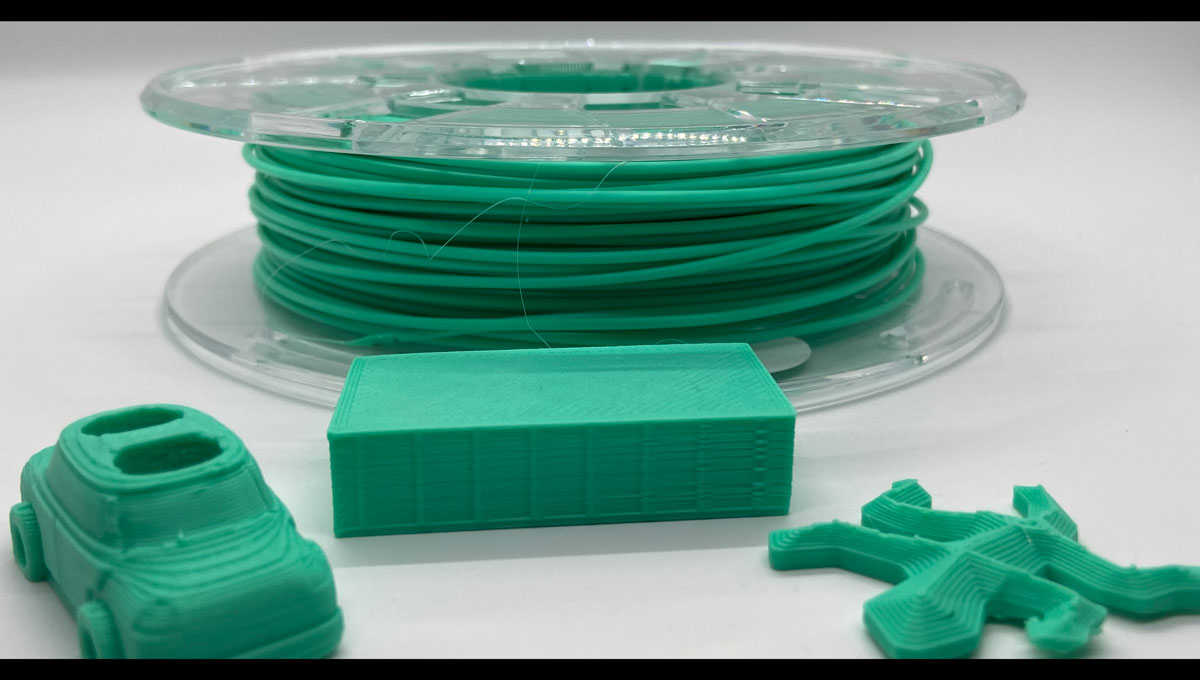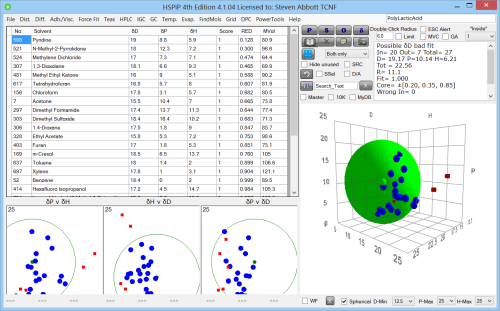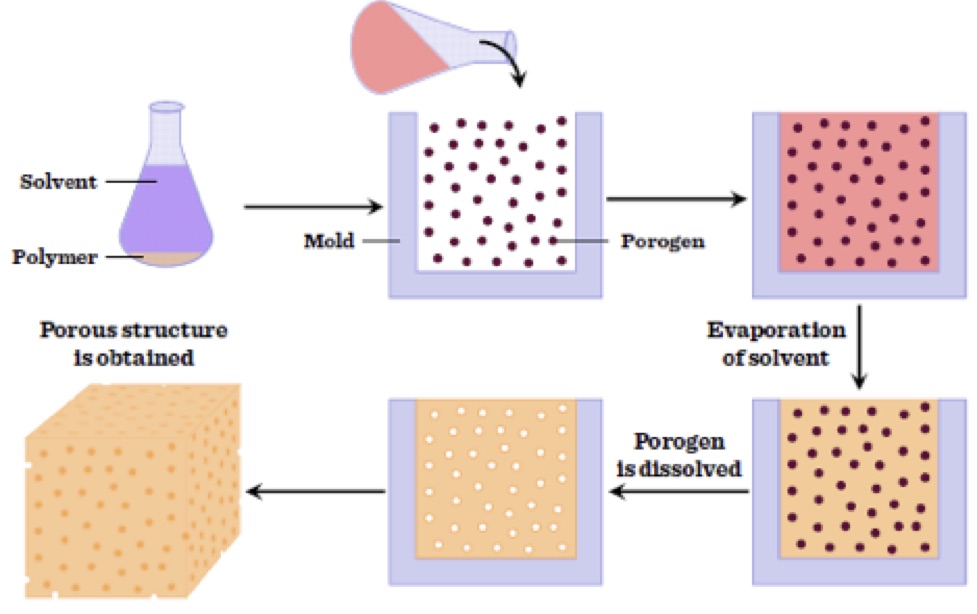Polylactic acid solvents
Home » » Polylactic acid solventsYour Polylactic acid solvents images are available in this site. Polylactic acid solvents are a topic that is being searched for and liked by netizens today. You can Download the Polylactic acid solvents files here. Find and Download all royalty-free photos.
If you’re searching for polylactic acid solvents pictures information connected with to the polylactic acid solvents interest, you have come to the right blog. Our site always gives you suggestions for refferencing the maximum quality video and image content, please kindly surf and locate more enlightening video content and images that match your interests.
Polylactic Acid Solvents. Plastics that are derived from biomass eg. It dissolves PLA almost instantly and produces a seamless and clean weld once it evaporates away. Glacial Acetic Acid Oleum etc but is is not a dissolution it is more decomposition. The preparative conditions were optimized.
 The Cycle Of Pla In Nature While Pla Can Be Considered An Eco Friendly Download Scientific Diagram From researchgate.net
The Cycle Of Pla In Nature While Pla Can Be Considered An Eco Friendly Download Scientific Diagram From researchgate.net
USA has produced PLA from recombinant corn by means of an intensive large-scale process that reduces production costs 2. Polylactic acid PLA derived from biomass is a typical bio-plastic that can be made in a three-step process of fermentation separation and polymerization. Employment of smaller internal aqueous phase volume 50 microliters or 100. The lactic acid used for the synthesis of polylactic acid is derived from genetically altered corn grains Rijavec and Bukošek 2009. Tetrahydrofurane and chloroform usage is limited in Russia. I realise not everyone has access to it but for those who do it is great for solvent-welding of PLA parts.
Polylactic acid PLA derived from biomass is a typical bio-plastic that can be made in a three-step process of fermentation separation and polymerization.
PLA is commonly synthesized by ring-opening polymerization of the cyclic lactide dimer Ref 7. The lactic acid used for the synthesis of polylactic acid is derived from genetically altered corn grains Rijavec and Bukošek 2009. I realise not everyone has access to it but for those who do it is great for solvent-welding of PLA parts. Polylactic Acid can be broken up utilizing different specialists for example methyl ethyl ketone Acetone ethyl acetic acid derivation tetrahydrofuran and caustic soda. It dissolves PLA almost instantly and produces a seamless and clean weld once it evaporates away. These fibres are manufactured with the.
 Source: researchgate.net
Source: researchgate.net
DCM DichloroMethane is a solvent for PLA and PLA. DCM DichloroMethane is a solvent for PLA and PLA. Its used to postprocessing to polish object. Im searching for polylactic acid that used in 3D printing solvent that is less toxic. Glacial Acetic Acid Oleum etc but is is not a dissolution it is more decomposition.
 Source: researchgate.net
Source: researchgate.net
Polylactic acid is not easily affected by solvent swelling and dissolution during industrial processing. Polylactic acid PLA or polylactide is a semicrystalline compostable polyester produced industrially from renewable resources that are fermented to form lactic acid and. There are several different types of Polylactic Acid to include Racemic PLLA Poly-L-lactic Acid Regular PLLA Poly-L-lactic Acid PDLA Poly-D-lactic Acid and PDLLA Poly-DL-lactic Acid. It was first discovered in 1932 by Wallace Carothers by heating lactic acid under vacuum while removing condensed water. Any acids will dissolve PLA hydrolize.
 Source: semanticscholar.org
Source: semanticscholar.org
Polylactic acid is a natural biodegradable organic substance present in the bodies of animals plants and microbes. Comparison of electrospun and solvent cast polylactic acid PLApolyvinyl alcohol PVA inserts as potential ocular drug delivery vehicles. Polylactic acid PLA derived from biomass is a typical bio-plastic that can be made in a three-step process of fermentation separation and polymerization. It was first discovered in 1932 by Wallace Carothers by heating lactic acid under vacuum while removing condensed water. I can assume that dioxane will dissolve it also.
 Source: researchgate.net
Source: researchgate.net
There are several different types of Polylactic Acid to include Racemic PLLA Poly-L-lactic Acid Regular PLLA Poly-L-lactic Acid PDLA Poly-D-lactic Acid and PDLLA Poly-DL-lactic Acid. It was first discovered in 1932 by Wallace Carothers by heating lactic acid under vacuum while removing condensed water. PLA are known as bioplastics. The lactic acid used for the synthesis of polylactic acid is derived from genetically altered corn grains Rijavec and Bukošek 2009. The objective of this study was to produce polylactic acid PLA microspheres containing bovine insulin as a sparingly water soluble model drug using a water-in-oil-in-water wow emulsion solvent evaporation method.
 Source: researchgate.net
Source: researchgate.net
PLA are known as bioplastics. Its used to postprocessing to polish object. However the use of bio-plastics remains limited because their production costs are 3-10 times higher than those of conventional plastics 1Polylactic acid PLA derived from biomass is a typical bio-plastic that can be made in a three-step process of fermentation separation and polymerization. Polylactic acid as such cannot be found in nature but needs to be industrially prepared with lactic acid polymerisation. Polylactic acid PLA is a renewable aliphatic polyester which is completely synthesized from renewable resources such as corn starch Ref 567.
 Source: researchgate.net
Source: researchgate.net
Most plastics by contrast are derived from the distillation and polymerization of nonrenewable petroleum reserves. PLA are known as bioplastics. PLA is commonly synthesized by ring-opening polymerization of the cyclic lactide dimer Ref 7. In case youre attempting to have a spotless form dissolving a help material is undoubtedly an ideal choice yet is PLA Polylactic Acid even dissolvable. Plastics that are derived from biomass eg.
 Source: semanticscholar.org
Source: semanticscholar.org
Im searching for polylactic acid that used in 3D printing solvent that is less toxic. Comparison of electrospun and solvent cast polylactic acid PLApolyvinyl alcohol PVA inserts as potential ocular drug delivery vehicles. DCM DichloroMethane is a solvent for PLA and PLA. Its used to postprocessing to polish object. Tetrahydrofurane and chloroform usage is limited in Russia.
 Source: 3dprintingspot.com
Source: 3dprintingspot.com
These fibres are manufactured with the. Employment of smaller internal aqueous phase volume 50 microliters or 100. There are several different types of Polylactic Acid to include Racemic PLLA Poly-L-lactic Acid Regular PLLA Poly-L-lactic Acid PDLA Poly-D-lactic Acid and PDLLA Poly-DL-lactic Acid. Polylactic acid is not easily affected by solvent swelling and dissolution during industrial processing. The preparative conditions were optimized.
 Source: hansen-solubility.com
Source: hansen-solubility.com
Polylactic acid is a natural biodegradable organic substance present in the bodies of animals plants and microbes. DCM DichloroMethane is a solvent for PLA and PLA. It was first discovered in 1932 by Wallace Carothers by heating lactic acid under vacuum while removing condensed water. The thermal stability of PLA is good the processing temperature is 170-230 and it has good solvent resistance. Solvents such as tetrahydrofuran THF and acetone because of extensive cross-linking17 Subsequently.
 Source: sciencedirect.com
Source: sciencedirect.com
I can assume that dioxane will dissolve it also. Polylactic acid or polyactide PLA is a biodegradable and bioactive polyester made up of lactic acid building blocks. These fibres are manufactured with the. Polylactic acid PLA derived from biomass is a typical bio-plastic that can be made in a three-step process of fermentation separation and polymerization. In case youre attempting to have a spotless form dissolving a help material is undoubtedly an ideal choice yet is PLA Polylactic Acid even dissolvable.

These fibres are manufactured with the. Polylactic acid as such cannot be found in nature but needs to be industrially prepared with lactic acid polymerisation. It dissolves PLA almost instantly and produces a seamless and clean weld once it evaporates away. Polylactic acid or polyactide PLA is a biodegradable and bioactive polyester made up of lactic acid building blocks. Glacial Acetic Acid Oleum etc but is is not a dissolution it is more decomposition.
 Source: semanticscholar.org
Source: semanticscholar.org
These fibres are manufactured with the. PLA is commonly synthesized by ring-opening polymerization of the cyclic lactide dimer Ref 7. USA has produced PLA from recombinant corn by means of an intensive large-scale process that reduces production costs 2. These fibres are manufactured with the. Polylactic acid is a natural biodegradable organic substance present in the bodies of animals plants and microbes.
 Source: researchgate.net
Source: researchgate.net
Its used to postprocessing to polish object. Processing temperature is generally 170230 C so it is also suitable for extrusion spinning biaxial stretching and injection blow-molding processing methods 12 13 14. Polylactic acid as such cannot be found in nature but needs to be industrially prepared with lactic acid polymerisation. Any acids will dissolve PLA hydrolize. Comparison of electrospun and solvent cast polylactic acid PLApolyvinyl alcohol PVA inserts as potential ocular drug delivery vehicles.
 Source: researchgate.net
Source: researchgate.net
These fibres are manufactured with the. Its used to postprocessing to polish object. Dichloroethane is toxic acetone and dichloromethane less but enough. Polylactic acid is a natural biodegradable organic substance present in the bodies of animals plants and microbes. In case youre attempting to have a spotless form dissolving a help material is undoubtedly an ideal choice yet is PLA Polylactic Acid even dissolvable.

It dissolves PLA almost instantly and produces a seamless and clean weld once it evaporates away. Im searching for polylactic acid that used in 3D printing solvent that is less toxic. Polylactic acid is a natural biodegradable organic substance present in the bodies of animals plants and microbes. Tetrahydrofurane and chloroform usage is limited in Russia. The objective of this study was to produce polylactic acid PLA microspheres containing bovine insulin as a sparingly water soluble model drug using a water-in-oil-in-water wow emulsion solvent evaporation method.
 Source: spaj.ukm.my
Source: spaj.ukm.my
Polylactic acid as such cannot be found in nature but needs to be industrially prepared with lactic acid polymerisation. PLA are known as bioplastics. The preparative conditions were optimized. Polylactic acid or polyactide PLA is a biodegradable and bioactive polyester made up of lactic acid building blocks. Plastics that are derived from biomass eg.
 Source: researchgate.net
Source: researchgate.net
In case youre attempting to have a spotless form dissolving a help material is undoubtedly an ideal choice yet is PLA Polylactic Acid even dissolvable. Polylactic Acid PLA is different than mo st thermoplastic polymers in that it is derived from renewable resources like corn starch or sugar cane. However the use of bio-plastics remains limited because their production costs are 3-10 times higher than those of conventional plastics 1Polylactic acid PLA derived from biomass is a typical bio-plastic that can be made in a three-step process of fermentation separation and polymerization. Employment of smaller internal aqueous phase volume 50 microliters or 100. Polylactic Acid can be broken up utilizing different specialists for example methyl ethyl ketone Acetone ethyl acetic acid derivation tetrahydrofuran and caustic soda.
 Source: researchgate.net
Source: researchgate.net
Processing temperature is generally 170230 C so it is also suitable for extrusion spinning biaxial stretching and injection blow-molding processing methods 12 13 14. Polylactic Acid PLA is different than mo st thermoplastic polymers in that it is derived from renewable resources like corn starch or sugar cane. Employment of smaller internal aqueous phase volume 50 microliters or 100. In case youre attempting to have a spotless form dissolving a help material is undoubtedly an ideal choice yet is PLA Polylactic Acid even dissolvable. PLA is commonly synthesized by ring-opening polymerization of the cyclic lactide dimer Ref 7.
This site is an open community for users to do sharing their favorite wallpapers on the internet, all images or pictures in this website are for personal wallpaper use only, it is stricly prohibited to use this wallpaper for commercial purposes, if you are the author and find this image is shared without your permission, please kindly raise a DMCA report to Us.
If you find this site convienient, please support us by sharing this posts to your favorite social media accounts like Facebook, Instagram and so on or you can also save this blog page with the title polylactic acid solvents by using Ctrl + D for devices a laptop with a Windows operating system or Command + D for laptops with an Apple operating system. If you use a smartphone, you can also use the drawer menu of the browser you are using. Whether it’s a Windows, Mac, iOS or Android operating system, you will still be able to bookmark this website.